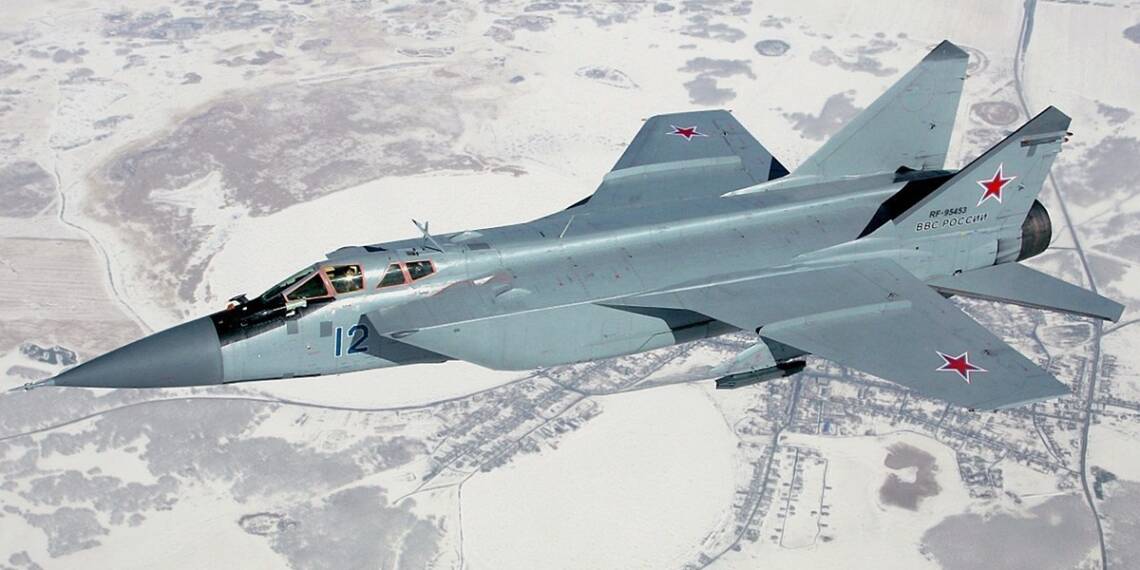The MiG-31I, an advanced variant of the MiG-31 Foxhound, now features a critical upgrade enabling in-flight refueling, significantly extending its operational range. This development, disclosed by an unnamed source via TASS News Agency, markedly enhances the aircraft’s combat capabilities and strategic utility in long-range aviation for the Russian Aerospace Forces.
The Mikoyan MiG-31, known by NATO as the Foxhound, is celebrated as the fastest combat aircraft in service. With over four decades of service, it has undergone numerous upgrades to remain strategically relevant. The latest, an air-to-air refueling capability, ensures the MiG-31I continues to be a formidable asset in modern aerial warfare.
The MiG-31I, unlike the MiG-31K which carries the Kinzhal hypersonic missile, includes distinct engines, avionics, and missile systems. This new refueling capability significantly enhances its operational range and duration, offering new tactical possibilities.
Military analysts, including retired Squadron Leader Vijainder K. Thakur, emphasize the strategic implications of this upgrade. Thakur notes that the extended range of the MiG-31I could expose much of Europe to heightened threat levels, particularly from Kinzhal-equipped variants. This necessitates a prolonged high-alert status for the Armed Forces of Ukraine (AFU), especially following US/NATO AWACS notifications of MiG-31I operations.
The MiG-31I’s refueling capability aligns it with Western military aircraft, reducing the need to land for refueling during combat, which significantly heightens vulnerability. The aircraft uses Russian Il-78 or Il-78M tankers, capable of refueling multiple aircraft simultaneously, enhancing logistical efficiency and strategic mobility.
This advancement solidifies the MiG-31I’s role in Russian aerospace strategy and alters tactical operations in regions where it is deployed. The aircraft, an advanced version of the MiG-31 series, has been designed to boost operational capabilities and extend mission endurance, as reported by TASS. It features mid-air refueling and sophisticated electronic systems that enhance navigation and precision in deploying weapons like the Kinzhal hypersonic missile.
Equipped with an electronic remote control system and onboard computers, the MiG-31I autonomously manages flight trajectories and missile deployment, ensuring precise target engagement. Despite a postponed appearance at Russia’s 2022 Victory Day Parade due to bad weather, it was later showcased at the Army 2022 international arms exhibition by Lieutenant-General Sergey Dronov, highlighting its critical defense role.
Similar to the MiG-31K, extensively used in Ukraine as a Kinzhal platform, the MiG-31I has been demonstrated in strategic displays, such as at the 2022 Knevichi airfield event, where it was presented to North Korean leader Kim Jong Un by Russian Defense Minister Sergey Shoigu.
The MiG-31I is also noted for its advanced Fly-By-Wire (FBW) controls, allowing for precise missile deployment—a capability crucial for effective Kinzhal launches, requiring exact alignment of launch parameters like attitude, altitude, and speed.
Further expanding its potential, there is speculation about the MiG-31I’s dual capability as a launcher for small spacecraft, indicating its role in broader defense and space exploration objectives. According to reports in 2021, the Russian Aircraft Corporation MiG was tasked with the overhaul and modernization of existing MiG-31K aircraft to the advanced MiG-31I standard, suggesting a unified future designation for all Kinzhal-capable MiG-31 variants.
This modernization and capability enhancement of the MiG-31I, while elevating the technological threshold, poses a significant challenge to Russia’s adversaries, notably within Europe and the United States. The extension of operational ranges and the advanced deployment of hypersonic missiles augment the strategic deterrence capabilities of Russia, marking a significant shift in aerial combat dynamics.








